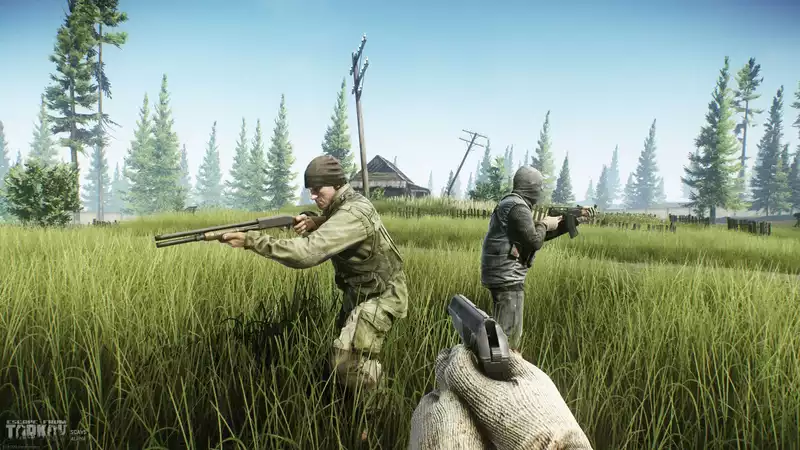Part of the appeal of Escape From Tarkov is that each player has a very different primary goal: unlike games like PUBG or Fortnite, each gameplay session, called a raid, is not just about killing other players. Finding and acquiring loot is equally important.
Escape From Tarkov employs a complex looting and bartering system that rewards careful looting in each raid. This means you need to know what to look for as efficiently as possible. If you're still new to the world of Tarkov and are as or more interested in looting than the game's relentless combat, check out the "Escape from Tarkov" looting guide below.
Looting is as simple as finding a container and waiting for your character to finish checking its contents. Not all containers are the same, however. Large crates are likely to contain large amounts of items, such as weapons and medical supplies. Once you are familiar enough with the game, you will be able to tell the difference between crates that contain weapons and crates that contain other items.
All loot, whether crates or something as small as a jacket on a hook, will appear in the same place during each raid. All Escape from Tarkov loot will occupy space on the grid, either in an individual's inventory or in a container. Thus, larger crates may yield larger and more valuable items.
Some loot may be immediately useful, such as recovery items, survival items, weapons and ammunition. However, some items, like electronics, need to be given to the right person outside of the raid. In general, there are three things you can do with these types of items: barter them with a dealer NPC, give them to a dealer to complete a specific quest, or sell them at a flea market.
Bartering with various dealer NPCs allows you to get what you need, such as guns, larger backpacks, weapon modifications, medical supplies, etc. Bartering, like everything else associated with a dealer, depends on one's loyalty level with that dealer. If you complete quests for that dealer and increase your loyalty level, you will have more barter options. You can also buy things from the dealer with currency, and this list grows as your loyalty level increases. Note that pledging loyalty to one dealer may decrease your loyalty to other dealers.
Receiving quests from dealers will increase your loyalty as well as provide you with very valuable reward items. Some quests require specific items, much like regular bartering. Many also require killing specific players or NPCs; completing Dealer quests serves as the game's primary campaign until a proper story campaign is added later.
The Flea Market is where the rest of the various trades take place. If you get something that the dealer doesn't want or that is worth much more than the dealer's fee, take it to the flea market and post a price for other players to see. Your transaction history is tracked by a basic reputation system, which goes up the more you complete a transaction and down the more you cancel it.
Keys are very special items and grant access to locked doors containing the best loot on each map. The official wiki lists the likely location of each key in detail, along with the corresponding locked location and potential rewards.
Smaller containers like jackets and buried loot caches tend to have specific keys. Some keys have a specific place to spawn, but they do not always show up during a raid, and their known location means that other players are hanging around nearby. It is likely to unlock the most valuable loot stashes, such as the KIBA firearms store on the Interchange map.
Most keys can be used indefinitely, but some keys break after a certain number of uses; you can find keys as a Scav, but you will need to bring a PMC to use them back in the raid; for more information on the difference between Scavs and PMCs, see the Escape From Tarkov Starter Guide.
.









Comments